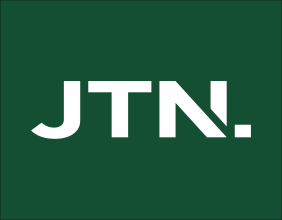GA, UNITED STATES, April 28, 2025 /EINPresswire.com/ -- A new study categorizes corporate climate risks into physical, transition and perceived categories. Researchers propose an integrated assessment framework combining exposure data, management capabilities and market perceptions. The work highlights supply chain vulnerabilities in physical risks, ESG limitations in transition risks, and AI applications for perceived risks. Findings help firms navigate climate challenges while identifying green energy opportunities.
As the global climate crisis intensifies, businesses are facing a triple impact of physical, transition and perception risks. Physical risks arise from direct damage to production facilities and supply chain disruptions caused by extreme weather events such as hurricanes and floods, with global climate disasters in 2023 resulting in direct economic losses exceeding US$300 billion. Transition risks are driven by carbon neutrality policies, such as the EU’s Carbon Border Adjustment Mechanism (CBAM), which has increased annual costs for Chinese export enterprises by CNY12-15 billion, alongside the accelerated obsolescence of traditional industry equipment due to rapid advancements in new energy technologies. Perception risks are reflected through media reports, financial disclosures and social network data, where a 10% increase in climate-related negative news leads to a 2.3% rise in stock price volatility for related industries.
A new review published in Risk Sciences reveals the absence of a systematic framework and the fragmented nature of indicators in corporate climate risk assessment. Existing methods cover less than 42% of the interaction mechanisms between physical, transition and perception risks. Key findings indicate that improving corporate risk management capabilities can reduce climate-related economic volatility by 23% to 37%, while establishing risk-sharing mechanisms can lower indirect losses by 12% to 18%. Greater transparency in information disclosure reduces stock price volatility by 2.3%.
At the national level, enhancing the transparency of low-carbon policies can reduce annual compliance costs for export enterprises by CNY12-15 billion, while every 1% increase in technological and disaster prevention investments reduces the probability of supply chain disruptions by 0.8%.
The study confirms that enterprises adopting an integrated assessment framework achieve a 15.6% market valuation premium, while those neglecting Scope 3 emissions underestimate transition costs by 31% to 45%.
“Future research should develop a composite assessment system incorporating supply chain network vulnerability, where risk transmission efficiency increases by 58% when node dependency weight ≥0.35, adaptive capacity quantification indicators, and multi-criteria decision models,” says senior and corresponding author Jun Bi. “By integrating machine learning with a predictive accuracy improvement to 89.2% and complex network analysis, it is possible to achieve dynamic coupling assessments of physical, transition, and perception risks.”
This new framework enhances the horizontal comparability of risk assessments by 67% and the effectiveness of strategic decisions by 41%, providing a systematic solution with both theoretical depth and practical value for global climate governance.
References
DOI
10.1016/j.risk.2025.100012
Original Source URL
https://doi.org/10.1016/j.risk.2025.100012
Funding Information
The study was financially supported by National Natural Science Foundation of China (Grant No. 72304136, 72234003, 71921003, 72488101).
Lucy Wang
BioDesign Research
email us here
Legal Disclaimer:
EIN Presswire provides this news content "as is" without warranty of any kind. We do not accept any responsibility or liability for the accuracy, content, images, videos, licenses, completeness, legality, or reliability of the information contained in this article. If you have any complaints or copyright issues related to this article, kindly contact the author above.
![]()





